Biomimetics uses insights from natural systems to address design opportunities. The team at Incubis have taken inspiration from a palm leaf to conceptualise a bus shelter that draws energy from the sun to power a filtration system that extracts harmful pollutants and fine particulate matter from the air to deliver clean air to waiting passengers as well as the immediate environs.
The leaf is an apt metaphor as it provides shade, uses photosynthesis to generate energy and also absorbs atmospheric carbon-di-oxide and releases oxygen.
Incubis’ concept for a bus shelter proposes a combination of catalytic convertors and ionisation filters to substantially reduce harmful pollutants to enhance air quality, especially when multiple bus shelters dispersed over a city ‘scrub’ the air in concert. A fine mist of water can also be released periodically to help settle dust particles. Other features built into the concept include, sun-tracking solar panels that mimic plant phototropism, rain water harvesting, energy-efficient LED-based illumination that modulates light-levels based on ambient conditions, Wi-Fi, CCTV for security, an interactive ticket dispenser and a composter for organic waste. The leaf inspired geometry with its cantilevered form and angled seating give a much better view of oncoming traffic and easier access to buses. The bus shelter idea features an interactive display panel which will have QR code panel and a ‘virtual’ ticket dispenser. The QR codes would be scanned by the passengers to know the exact location and arrival time of their bus on a purpose built App. Tickets can also be purchased through this App for a highly interactive and a completely paperless transaction.
Littering and the disorganised disposal of garbage are among the main causes of environmental pollution. A lot of money and human resources are spent on collecting, organising and separating this litter for reuse or disposal. The Mushroom—it is designed like a mushroom to make it a unique and identifiable urban symbol—is an idea for an organised waste management system. It is sustainable and allows segregation of waste at the primary stage of disposal.
The waste is segregated into three categories: Biodegradable, non-biodegradable and recyclable materials. The concept relooks at the mundane dustbin and not only functions as a litter collector but also as a litter organiser. When litter is first thrown into the Mushroom, the inbuilt sensors are activated and a pre-recorded audio message thanks the user for the generous act. The sensor also analyses the size and material of the litter. This information is passed to a chambered canister.
The chambers are categorised into biodegradable, non-biodegradable and recyclable materials. Depending on the material of the litter, the sensor immediately synchronises the rotation of the canister and activates the opening of the respective chamber.
The design solution proposes the conversion of all three forms of waste into a powdered compact form for ease of transportation and further use.
The bio-degradable material is converted directly into compost, which can be collected free of cost from the Mushroom by local residents. Non-biodegradable and recyclable materials are disposed off into respective areas or collected for reuse.
The Clip
Designer: Paul Sandip ![mg_85097_clip_inuse_280x210.jpg mg_85097_clip_inuse_280x210.jpg]()
![mg_85165_productdesign4_280x210.jpg mg_85165_productdesign4_280x210.jpg]()
The Clip is an attempt to redefine a mundane object and to breathe fresh thoughts into the field of design for mass manufacturing, while evoking ecological awareness and accountability. Realising today’s, and foreseeing tomorrow’s, scenario, it was felt that consumption of plastic house-wares will remain large enough to deplete our natural resources.
One way to reduce this consumption is to prolong the life of an existing product. I chose clothesline pegs as they are so numerous and ubiquitous. They break apart every now and then, sometimes causing injuries due to the metal spring fitted inside to create the peg’s grip the plastic gets brittle when kept in the sun and the metal springs tend to break off.
The improved longevity of the Clip confronts the challenges of waste reduction and also supports a productive economy by conserving the energy that was originally used to manufacture it.
Not only is it made of recycled or recyclable polyethylene, it also encourages old-fashioned cloth drying—in the sun.
The advantages of the product include the absence of stains since there are no metal components and therefore no rust marks. There are also no grip marks, since it does not bite onto the fabric. Moreover, the product has greater longevity because of its dual- jaw design (if one jaw is damaged, the other remains functional), is of low cost since it is easy to mass manufacture with a reduced number of components, and has better recyclability, since it is a single piece of moulded plastic.
The Clip shows how the form of a product lengthens its life manifold, improves reliability and also helps to save on manufacturing costs.
(Unlike other products featured here, which were conceptualised within two weeks, the Clip was Paul Sandip’s existing idea.)
Pavement Plan
Designer: Michael Foley
![mg_85101_pavement_280x210.jpg mg_85101_pavement_280x210.jpg]()
![mg_85167_productdesign5_280x210.jpg mg_85167_productdesign5_280x210.jpg]()
Pavements are a fundamental part of our living culture. Most cities and towns in India have not focussed enough on the holistic experience of pavements. The design challenge here is in creating a series of innovations that are enduring, smart and warm for pedestrians.
A fundamental problem is the need to maximise space, and yet romanticise the journey of a pedestrian and provide an inherently useful experience. The core of the design rests in the concept of ‘duality’—the products and experiences are designed with a multi-dimensional perspective.
Simple and robust technologies make the objects intelligent and useful. The seats are designed as simple counter-weighted installations, creating a very small footprint on the pavement when not in use the seats softly come back to a vertical position after use. The solution allows for seat surfaces to be localised and transformed as navigational support, waste management systems and more, all depending on the space.
The street lamp senses the environment and sweeps up a shade above the seats. The post of the street lamp is designed to be visible to commuters on the road and the pavement.
The tarmac is designed with colour-changing composites, creating a visual communication tool for pedestrians. Ergonomic Kitchen Tongs
Designer: Nishma Pandit
![mg_85099_kitchen_tongs_280x210.jpg mg_85099_kitchen_tongs_280x210.jpg]()
![mg_85169_productdesign6_280x210.jpg mg_85169_productdesign6_280x210.jpg]()
Every Indian kitchen has a pair of tongs because stainless steel utensils used in the kitchen often do not have handles. Users too seem to prefer utensils without handles because they are easier to keep clean, since Indian cooking includes a lot of frying.
Conventional tongs are tricky to hold and you need to learn how to handle them. There are largely two kinds of kitchen tongs that are popular, but both need a tricky finger-play to tighten and loosen the tong’s grip.
The proposed new design of the kitchen tong has a full grip with a finger support lever to open easily when required. The grip is also made larger for providing more power during holding. The front-gripping jaws use metal inserts for strength and silicon rubber-flapped grip for better, anti-slip surface contact.
The product has been combined with a lemon squeezer. This ensures that there’s one less utensil to be washed in the kitchen.
Falling water
Designer: Ayush Kasliwal![mg_85103_fallingwater_280x210.jpg mg_85103_fallingwater_280x210.jpg]()
![mg_85171_productdesign7_280x210.jpg mg_85171_productdesign7_280x210.jpg]()
The product is an integrated shelf, tap, soap dispenser and hand dryer, with each function being triggered by simple gestures that are detected by motion sensors. The ‘no touch’ aspect of the product helps to maintain body hygiene.The motion- and light-sensitive switch lights up the LED strip as soon as it detects any motion in its vicinity and visually guides the user to the sink the lights also ensure the hands are well lit when they are being washed. Touch-sensitive switches can be used to manipulate the temperature of the thermostat (placed inside the wall component of the shelf), which may be displayed on an optional LED screen, or the amount of water the user wants. Since these features will be used infrequently, they are etched discretely on the stainless steel surface.The aerator spout ensures a good spread of the water, thereby saving water. The wide spout simulates the look of a waterfall, and alludes to the iconic building ‘Fallingwater’ by Frank Lloyd Wright. Motion sensors detect the presence of the hand right below the spout, ensuring water flows only when necessary. The ultra-thin hand dryers—activated by motion sensors—circulate warm air and ensure that dripping hands are held above the sink.
The in-built soap dispenser is activated by a short-range motion sensor and dispenses a precise amount of liquid soap. A clear, refillable plastic bottle is screwed to the bottom of the shelf to indicate refilling. The retainer ledge allows users—who frequently carry their mobile devises to the toilet—to prop up the device on the ledge so that it is easy to look at.
Fuel Dispenser at Petrol Pumps
Designer: Bala Mahajan
![mg_85105_petrol_pump_280x210.jpg mg_85105_petrol_pump_280x210.jpg]()
![mg_85195_bala_mahajan_280x210.jpg mg_85195_bala_mahajan_280x210.jpg]() Filling fuel at a petrol pump is an act of faith as far as trusting the quantity and quality of petrol that is being delivered to us is concerned. Petrol goes straight from the pump to the vehicle. We trust the metre display as the truth. We rarely know if the petrol filled is of the exact quantity as that displayed. But what if the amount of fuel was visible right in front of us?In earlier times, the design of a pump had an additional glass container introduced to pump the petrol into it manually, which was then delivered using gravity. It’s perhaps time to reinvent it.Here, I have attempted to bring back real-time visibility of the actual amount of fuel being filled by creating an integrated transparent glass container for fuel. Fuel is filled in this first and then dispensed into the vehicle. One can see the fuel being emptied from the container into the tank. Calibration on the container shows the volume level clearly. Display of the amount and quantity filled is often a challenge to read. I propose the display be right on top, with large digits.
Filling fuel at a petrol pump is an act of faith as far as trusting the quantity and quality of petrol that is being delivered to us is concerned. Petrol goes straight from the pump to the vehicle. We trust the metre display as the truth. We rarely know if the petrol filled is of the exact quantity as that displayed. But what if the amount of fuel was visible right in front of us?In earlier times, the design of a pump had an additional glass container introduced to pump the petrol into it manually, which was then delivered using gravity. It’s perhaps time to reinvent it.Here, I have attempted to bring back real-time visibility of the actual amount of fuel being filled by creating an integrated transparent glass container for fuel. Fuel is filled in this first and then dispensed into the vehicle. One can see the fuel being emptied from the container into the tank. Calibration on the container shows the volume level clearly. Display of the amount and quantity filled is often a challenge to read. I propose the display be right on top, with large digits.
The price rate of the fuel is mentioned separately. Wouldn’t it be better for consumers to have the option of using such a dispenser even if it takes a little more time than normal to refuel a vehicle?
Karma Tree
Designer: Abhijit Bansod
![mg_85107_karma_tree_280x210.jpg mg_85107_karma_tree_280x210.jpg]()
![mg_85175_productdesign9_280x210.jpg mg_85175_productdesign9_280x210.jpg]() With its roots embedded in Indian culture, and eyes affixed towards the future, the Karma Tree gracefully teaches children the importance of doing good deeds.
With its roots embedded in Indian culture, and eyes affixed towards the future, the Karma Tree gracefully teaches children the importance of doing good deeds.
The ‘Kalpa Vriksha’ was a canonical wish-fulfilling tree in Indian mythology. People would tie sacred threads on the trunks of this revered tree, hoping it would fulfil their wishes in either this lifetime, or the next. The Karma Tree captures that symbolism in a playful avatar, with a fresh message to preach. Children are taught the value of good karma by using the tree, populating it with the fruits they earn from their good deeds. Soon, the tree is full of beautiful fruits, ready for reaping. Good karma is rewarded instantly, nurturing the child’s conscience.
A companion app similarly tracks the growth of the tree and of the child’s ever-positive nature. Enabled to teach youngsters the importance of earning, each good deed adds a colourful fruit to the tree and takes the child a step closer to being rewarded for their positive karma. Instilling in children the significance of “reaping what you sow”, the Karma Tree takes a traditional message and makes it simpler and faster to understand, imbibe and also appreciate.

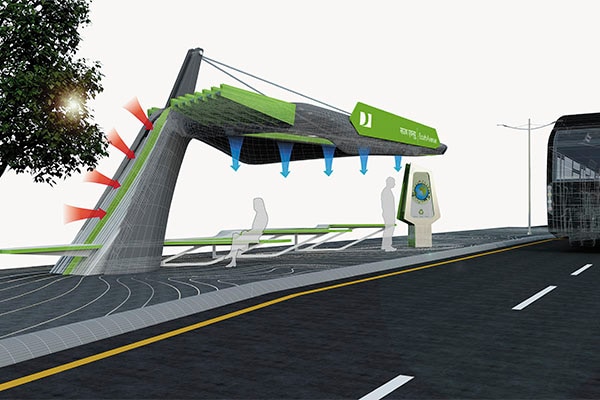
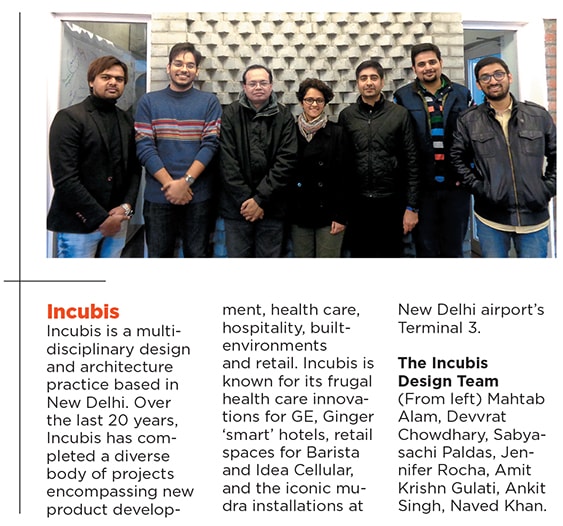
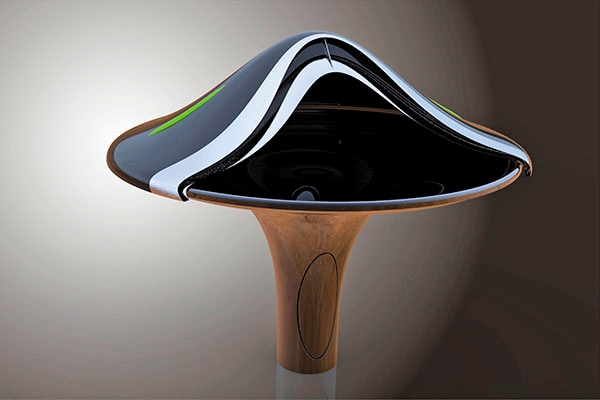
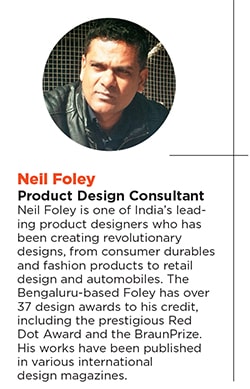
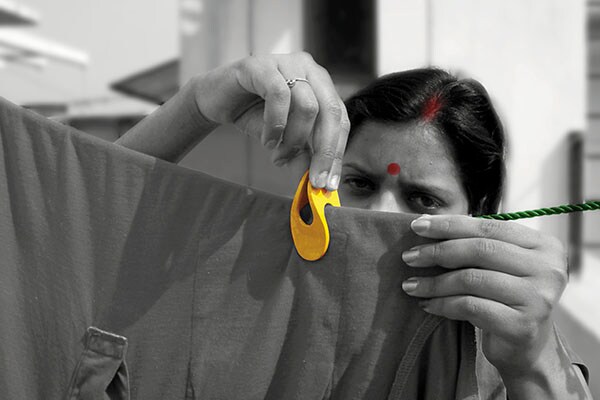
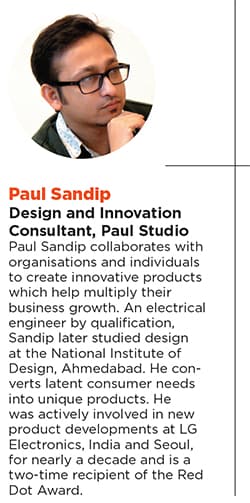
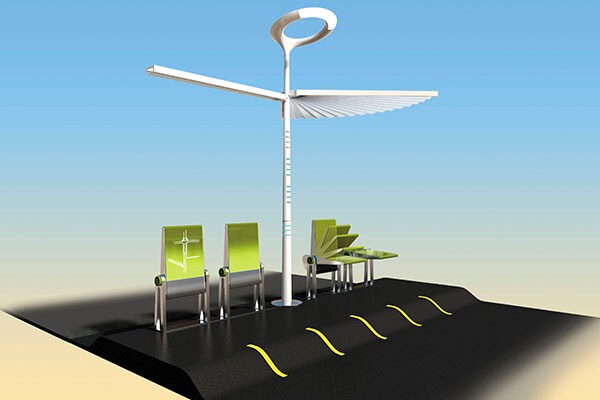

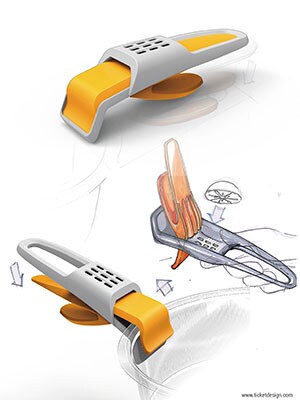
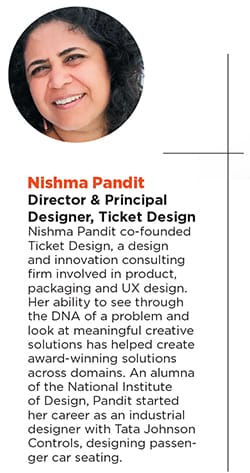

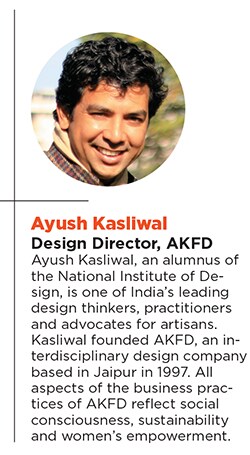

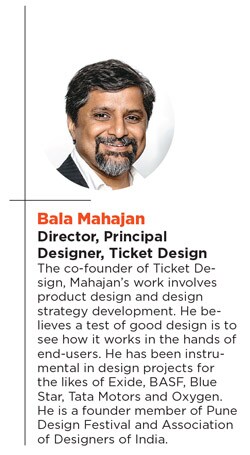 Filling fuel at a petrol pump is an act of faith as far as trusting the quantity and quality of petrol that is being delivered to us is concerned. Petrol goes straight from the pump to the vehicle. We trust the metre display as the truth. We rarely know if the petrol filled is of the exact quantity as that displayed. But what if the amount of fuel was visible right in front of us?In earlier times, the design of a pump had an additional glass container introduced to pump the petrol into it manually, which was then delivered using gravity. It’s perhaps time to reinvent it.Here, I have attempted to bring back real-time visibility of the actual amount of fuel being filled by creating an integrated transparent glass container for fuel. Fuel is filled in this first and then dispensed into the vehicle. One can see the fuel being emptied from the container into the tank. Calibration on the container shows the volume level clearly. Display of the amount and quantity filled is often a challenge to read. I propose the display be right on top, with large digits.
Filling fuel at a petrol pump is an act of faith as far as trusting the quantity and quality of petrol that is being delivered to us is concerned. Petrol goes straight from the pump to the vehicle. We trust the metre display as the truth. We rarely know if the petrol filled is of the exact quantity as that displayed. But what if the amount of fuel was visible right in front of us?In earlier times, the design of a pump had an additional glass container introduced to pump the petrol into it manually, which was then delivered using gravity. It’s perhaps time to reinvent it.Here, I have attempted to bring back real-time visibility of the actual amount of fuel being filled by creating an integrated transparent glass container for fuel. Fuel is filled in this first and then dispensed into the vehicle. One can see the fuel being emptied from the container into the tank. Calibration on the container shows the volume level clearly. Display of the amount and quantity filled is often a challenge to read. I propose the display be right on top, with large digits.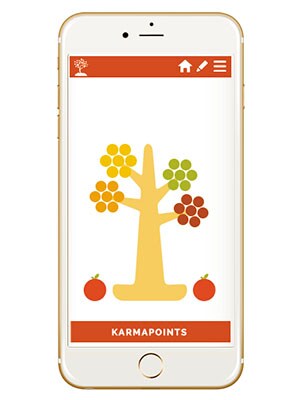
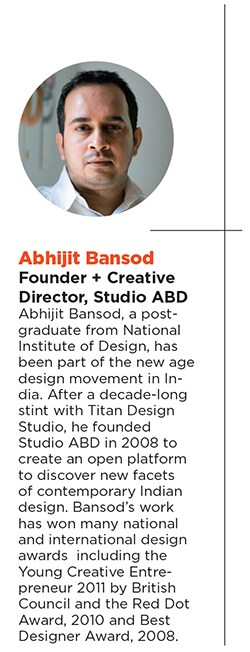 With its roots embedded in Indian culture, and eyes affixed towards the future, the Karma Tree gracefully teaches children the importance of doing good deeds.
With its roots embedded in Indian culture, and eyes affixed towards the future, the Karma Tree gracefully teaches children the importance of doing good deeds.